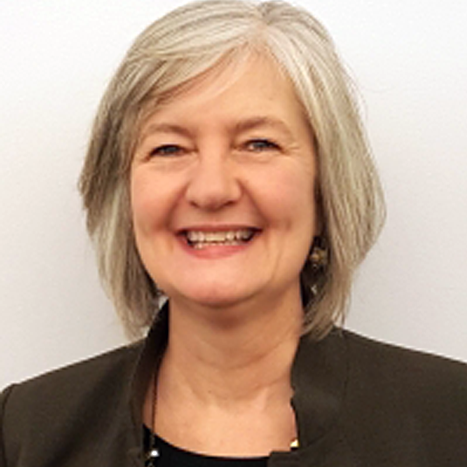Perspective: The Case for Person-Centered Residential Long-Term Care in 2021: Measure It, Move It Forward
November 08, 2021
Christine Stanik
Anne Montgomery
Sarah Slocum
Morgan Perry
Introduction
As the U.S. continues to struggle with combatting Covid-19, the deep difficulties faced by more than one million Americans who live in nursing homes persist. Staffing shortages are widespread, and safety violations and resident quality of life (QOL) lapses are still ringing alarm bells. In short, these challenges suggest it is prime time for a pivot.
Fortunately, there are quite a few forward-looking, mission-driven nursing home operators and state and federal policymakers for whom the shock of Covid-19 provides a powerful impetus to support a better model of residential long-term care—one that is both safer and much more clearly focused on enhancing resident quality of life, and which offers direct care workers a career path forward.
The fulcrum of change is a culture change, or person-centered care, model which provides both training and tools to implement, track and embed quality improvement (QI) that pushes resident choice and experience to the forefront. Years of work on culture change by pioneers has produced an array of best practices that demonstrate how staff can move away from interacting with residents in a traditional, task-oriented manner. In its place rises a person-centered model where interpersonal relationships are prioritized, and frontline staff are given wider scope to make decisions. Some nursing homes also renovate or rebuild to be smaller and to create private rooms, and/or to make other types of physical adaptations that help their facilities look and feel more like an individual’s home (instead of a hospital).
Now is the time for policymakers and stakeholders to join together and make a commitment to continually improving the quality of life for nursing home residents. We know, for example, that existing clinically-focused metrics are quite limited in their ability to capture, measure and track resident choice and experience. Maintenance of mobility and rates of antipsychotic use are sometimes considered proxy measures for QOL, but many other factors—such as self-determination in food choices, agency to shape meaningful activities and relationships, and having a measure of control to make one’s room feel like a home, have no uniform measurement system. In turn, this makes it difficult to recognize which homes are making the biggest efforts to improve resident QOL, and hampers the ability of policymakers and regulators to reward homes for achieving person-centered care. Finally, the absence of tracking and measurement makes it difficult to know whether resident rights, as described in state and federal law and regulations,[i] are actually being upheld.
We believe there is a case to be made for taking steps that begin to infuse QOL into formal quality improvement initiatives—namely the Quality Assurance and Performance Improvement (QAPI) process; that work on QOL-focused tracking tools, surveys and other measurement methodologies be continued and widely disseminated in conjunction with making training offered by comprehensive culture change organizations (e.g., The Eden Alternative[ii] and the Green House Project[iii]) more widely available on an ongoing basis; and that discussions about how to develop a QOL domain for the Nursing Home Compare Star Rating System be initiated.
The path to success is available in the form of purpose-designed QI initiatives grounded in the philosophy of staff-led culture change. Simply put, culture change is a flexible collection of evidence-informed QI methods that train, coach, and mentor all staff—frontline, leadership, administrative, clinical, and non-clinical—in the principles and techniques of person-centered care. Each home starts at a different point in the culture change journey and adopts changes at a different rate. Staff are called on to devise ways to translate what they learn into gradual shifts in day-to-day practices and protocols that improve resident choice and experience. Over time, data on these efforts and their impact are measured, along with data on staffing and other expenditures that may be related to or affected by culture change, select clinical quality measures, and qualitative findings collected in focus groups and interviews with residents, family, and staff.
Though there are multiple culture change curricula available in the US, few studies have evaluated the impact on homes across a broad range of areas that may be impacted by culture change training and implementation. For example, the literature provides scant information about how staff operationalize day-to-day practices that instill person-centered care over time. Somewhat surprisingly, culture change implementation has not been measured in relation to what staff and residents think, economic impact, and the rate of progress in shifting practices and protocols within homes that participate in training.
Because culture change inherently emphasizes the centrality of relationships and the small pleasures of everyday living, we have designed a novel tool, the Systems Change Tracking ToolSM (SCTT), to capture the adoption of culture change practices over time. An overview of the SCTT is available and the online coded version is available on request. The SCTT is currently being used in a project in Michigan and will soon be used in a project in Tennessee. The QI initiatives in both states are designed to embed culture change firmly in participating homes over a three-year period, and in doing so, to address the limitations of previous research on implementation.
Funded by the Michigan Department of Health and Human Services (MDHSS) through civil monetary penalty (CMP) funds, our project in Michigan began in 2019 and will conclude in early 2022. A portion of the grant is being used to purchase The Eden Alternative Path to Mastery culture change training curriculum, Milestones 1 and 2, for six Michigan nursing homes. The characteristics of the participating homes vary in a number of ways, including ownership, hospital affiliation, and resident demographics; their star ratings range from 2 to 5. Training and coaching interventions are led by The Eden Alternative and are provided free to the homes. In exchange, the nursing homes participate in a QI program and evaluation conducted independently by Altarum.
Designing the SCTT
The SCTT is grounded in the six domains of the Holistic Approach to Transformational Change (HATCh) conceptual culture change model: Care Practices, Workplace Practices, Environment, Family/Community, Leadership, and Stakeholders. Originally developed as part of a national study identifying best practices in caring for older adults who are living with dementia, the HATCh model was built to be person-centered, change-oriented, and provide a foundation for driving QI. Items on the SCTT were also influenced by earlier culture change compilations, including the Centers for Medicare & Medicaid Services’ (CMS) Artifacts of Culture Change. Before use in the Michigan project, the SCTT underwent cognitive testing and an iterative review process by long-term care, culture change, and survey methodology experts. The SCTT measures staff-led shifts in person-centered practices and protocols in 58 separate areas.
The protocol for filling out the SCTT asks nursing homes to assemble a group of staff members quarterly who represent different disciplines—administrative, direct care, activities, and others—to discuss and come to agreement on SCTT answers. The tool has four possible responses options: the home has a plan for implementation; the home has a plan that is partially implemented; the home has a plan that is fully implemented; or the home has no plan for implementation. Narrative responses are encouraged for clarifying details and context. In advance of each meeting, staff are provided with data from prior quarters to remind them of their previous answers and to help guide their discussion.
Table 1. Sample SCTT Items
| Domain | Sample Item |
| Care Practices | Residents have easy access to snacks and beverages of their choice all day long. |
| Workplace Practices | Staff understand they are working in a resident’s home and act accordingly. |
| Environment | The home’s environment supports residents’ privacy and need for personal space. |
| Family/Community | Residents have opportunities for spontaneous and meaningful enjoyment of simple daily pleasures. |
| Leadership | The home honors CNAs as key decision-makers in helping to prioritize and implement changes that aim to improve care and quality of life for residents. |
| Stakeholders | The home informs the Survey Team of culture changes that are being made. |
Initial Data
In 2019, the first year of the project and prior to any culture change training, participating homes completed their first baseline entry in the SCTT. During the second quarter, after introductory culture change training had occurred, participating homes lowered their self-reported scores on some items, suggesting that staff realized they had more work to do to fully actualize person-centered care. The regression in reported scores spanned a variety of items and domains, different for each home. Over the course of 2019, implementation of person-centered care practices showed gradual advances among participating homes. Figure 1 shows aggregate changes among participating homes across 2019 and 2020.
Figure 1. Aggregated Changes in Implementation of Culture Change in Six Michigan Nursing Homes Over Time

In the first quarter of 2020, the Covid-19 pandemic dramatically changed patterns of care and daily routines in the nursing home sector, as many nursing homes struggled to keep their residents safe and to maintain some quality of life. Though there was some variability among Michigan nursing homes participating in our project, all regressed in implementing culture change on at least some SCTT items in early 2020, while accompanying narrative responses conveyed the difficulty of making progress during Covid-19. Homes did share information about efforts they were making to maintain good care practices and residents’ quality of life under difficult circumstances, including leadership shifting to direct care roles when needed. Others reported rethinking activities and dining so that residents could be positioned in their room doorways to maintain a safe distance, while promoting a sense of community.
Homes did not hesitate to report lower scores on person-centered care during Covid-19 and were forthright about their challenges. They remained committed to trying, despite limited time and staff capacity to implement changes. Throughout 2020 and 2021, homes made steady progress towards re-establishing more person-centered care practices and unifying them with infection control protocols to better serve their residents. These data show that the SCTT does track changes well—both positive and negative—under challenging circumstances.
Limitations. The SCTT relies on the perspective of a small group of staff, which may not fully reflect the experience of all staff. It also does not reflect resident perceptions. To address the latter, we will soon pilot a shorter, simpler version for residents, the Resident Systems Change Tracking Tool (R-SCTT) in the Tennessee project in eight nursing homes.
Discussion and Further Uses. Because the SCTT and its accompanying prioritizing matrix, offers nursing homes a clear, easy-to-use way to track culture change implementation—including areas where further improvement is needed—it is a natural fit for use in formal QI projects. In one such application, Altarum worked with a Michigan nursing home to craft a Quality Assurance and Performance Improvement (QAPI) project focusing on resident preference in shaping activities that strengthen a sense of community within the home. The five essential elements of QAPI are 1) that the process is ongoing; 2) it is proactive; 3) it is data driven; 4) it involves all levels of an organization; 5) it is meant to improve the Quality of Life (QOL) of residents, and the quality of care and services delivered in nursing homes. Thus, QAPI and the culture change journey are highly aligned.
Using five quarters of data, staff in the Michigan nursing home selected the SCTT question—residents have opportunities to engage in activities that build relationships—as input to design a QAPI Performance Improvement Project (PIP) in December 2020. The project focused on resident “relationship-building activities” that deliberately engaged residents in choosing and designing the activities.
To launch the PIP, the activities department established a Relationship Building Committee, including both staff and residents, that is charged with designing and helping to implement relationship-building activities. This Committee works closely with the home’s existing Resident Council, which also suggests activity choices and has developed a point system for prizes to encourage residents to attend group activities. Rather than a calendar of repeating activities that staff post each month, the calendar is now interactive, with residents suggesting new activities and providing feedback on those activities they liked, and those they did not enjoy. As of August:
- Over 90% of activities offered in the home promote socialization and relationship building; the remaining 10% of activities are designed for independent leisure.
- Roughly 15% of activities are suggested by residents.
- Notably, there has been a 48% increase in resident participation in activities between January and July.
At the leadership level, the Administrator of the home has secured a 10-fold increase in the activities budget from the corporate office by fostering buy-in to this QAPI project. The home’s social worker also started a weekly program that encourages residents to interact with her regularly outside of formal clinical assessments.
For thousands of other homes that may be contemplating starting (or re-starting) culture change and QI efforts to substantially improve resident QOL in the wake of low occupancy due to Covid-19, we invite interest in using the SCTT (which is free). As a helpful and easy-to-use tool, homes can clarify what works and what doesn’t in their homes and identify areas for QI that aim to make person-centered care a reality.
Concluding Observations
This work is critical in an era when homes are being required to keep residents safer from infection—and in doing so, many are physically isolating them, with severe unintended consequences. In the summer of 2020, Altarum surveyed nursing home residents finding that many were confined to their rooms for weeks and months, experienced deep, life-altering social isolation and loneliness, resulting in despondency and failure to thrive. From these enforced lockdowns, we learned anew that prolonged isolation of residents is neither workable nor ethical. Culture change offers a needed balance, promoting social and emotional well-being that does not detract from physical safety.
More than a decade ago, the Affordable Care Act forecast a hopeful future for the nursing home sector in a provision, Sec. 6114, which gives the Secretary of Health and Human Services a green light to conduct a national demonstration on culture change in nursing homes. If taken forward, such a demonstration would serve as a powerful catalyst for ambitious QI. In 2021, we have arrived at a critical pivot point, when federal and state policymakers and the nursing home industry can jointly decide to rebuild and reform by aiming to achieve higher staffing standards and lower turnover; better training, wages, and career advancement for frontline workers; and substantial improvements in safety and consistency of care that are balanced with greater amenities and choices for residents. Carpe diem.
[i] The National Consumer Voice for Quality Long-Term Care. Nursing Home Residents’ Rights [Factsheet]. https://theconsumervoice.org/uploads/files/long-term-care-recipient/CV_NHrights_factsheet_final.pdf
Altarum is a nonprofit organization that works with federal and state agencies and foundations to design and implement solutions to improve the health of individuals with fewer financial resources and populations disenfranchised by the health care system. We achieve measurable results by combining our expertise in public health and health care delivery with technology, workforce training and continuing education, applied research, and technical assistance. Our innovative solutions lead to better health for beneficiaries and better value for payers.

Perspective

Christine Stanik - PhD
Program Director, Delivery System Transformation
Areas of Expertise- Mixed-Methods Research
- Care of Older Adults
- Evaluation of Systems Level Interventions
As a psychologist, Christine brings a research and evaluation perspective to improving care services for elders and the disabled at a systems level. Through the design and execution of unique research protocols and tools, she works to build an evidence base for best practices around quality-of-life improvement and the person-centered care model. Using insights gained through empirical methods, she advocates for PACE expansion and comprehensive culture change in nursing homes.

Anne Montgomery - MS
Program Director, Delivery System Transformation
Areas of Expertise- Long-Term Services and Supports
- Medicare, Medicaid, the Older Americans Act, and other programs
- Social Determinants of Health in Older Adults
Anne Montgomery develops policy and research initiatives that improve long-term services and supports and medical care for older adults receiving services from Medicare, Medicaid, the Older Americans Act, and other programs. She is co-leading efforts to implement and evaluate comprehensive culture change and quality improvement in nursing homes and is working with colleagues to develop a new volunteer-based Community Care Corps program at the national level. Anne conducts workforce policy analysis for home and community-based services (HCBS) and advises on how to expand models of community-based care for older adults requiring complex services.

Sarah Slocum - MA
Program Director, Delivery System Transformation
Areas of Expertise- Long-term Services and Supports
- Medicare
- Medicaid
As a leader working to transform services, Sarah strives to create innovations and system changes that will make care for frail elders and people with disabilities available, accessible, and high quality in the setting of their choice. Through nursing home quality improvement, PACE expansion, benefit flexibility, and culture change efforts, she aims to change care delivery to a person-centered model.
Morgan Perry
Morgan is a public health analyst in Altarum's Center for Eldercare Improvement.